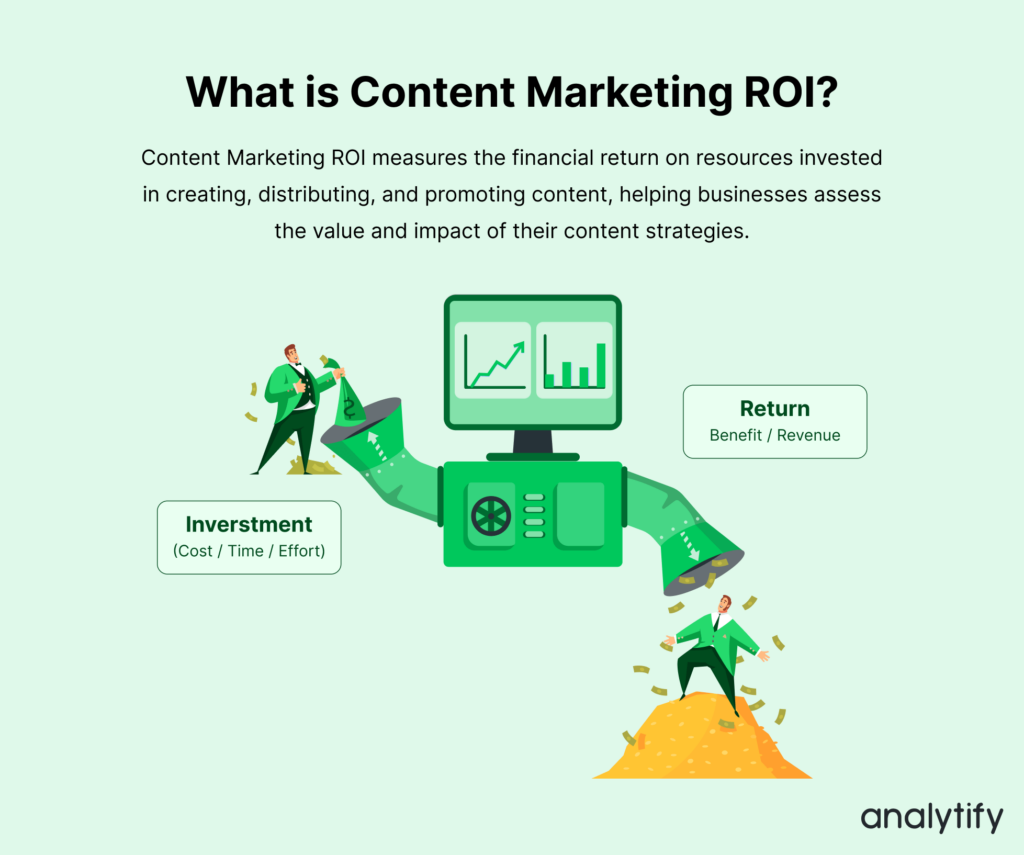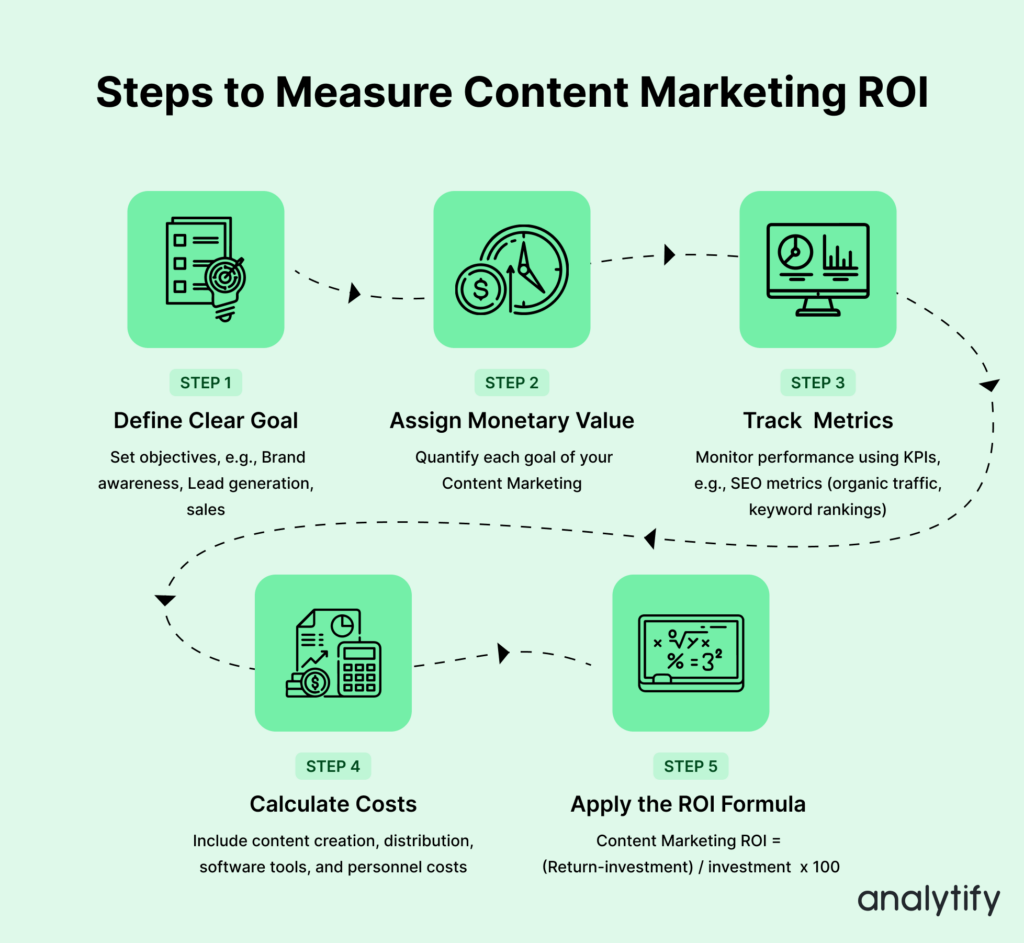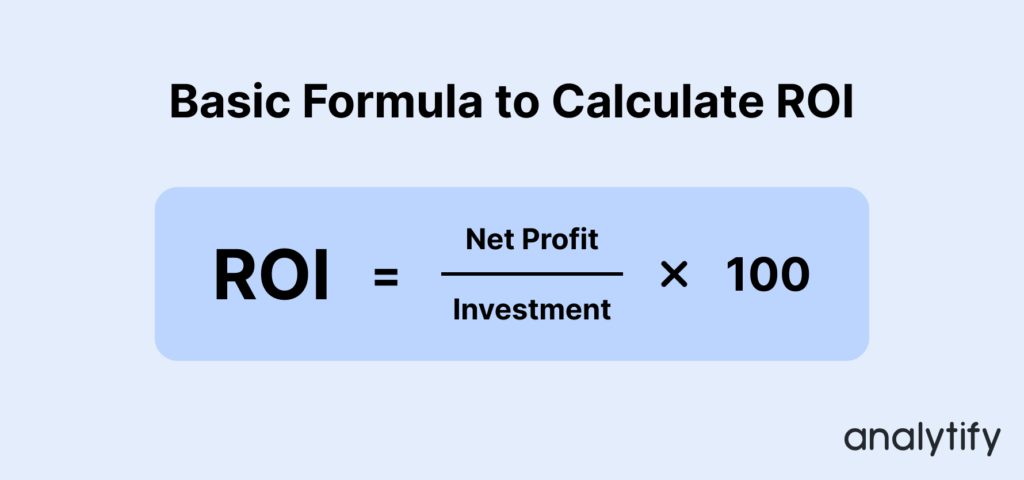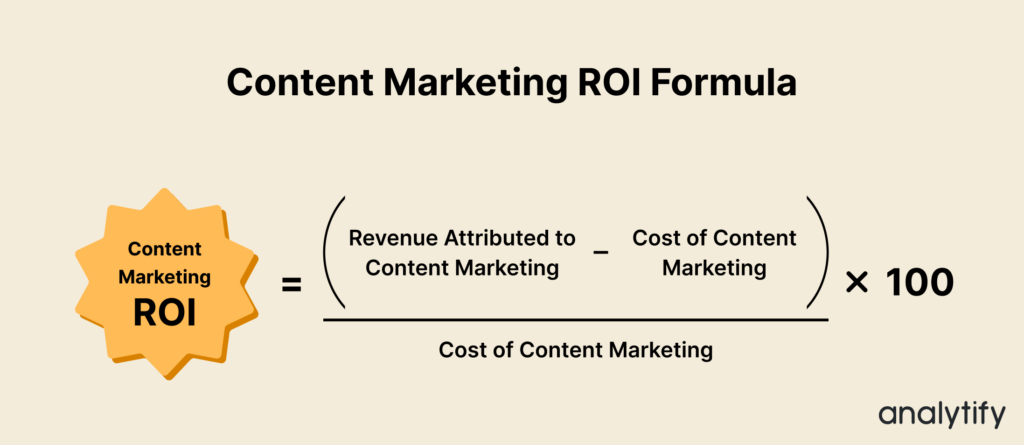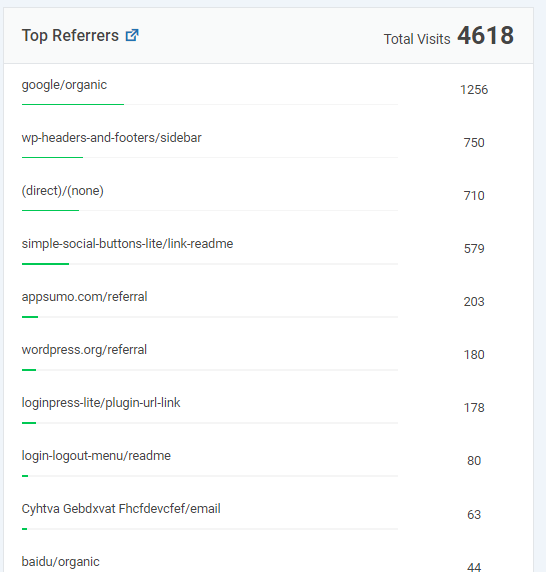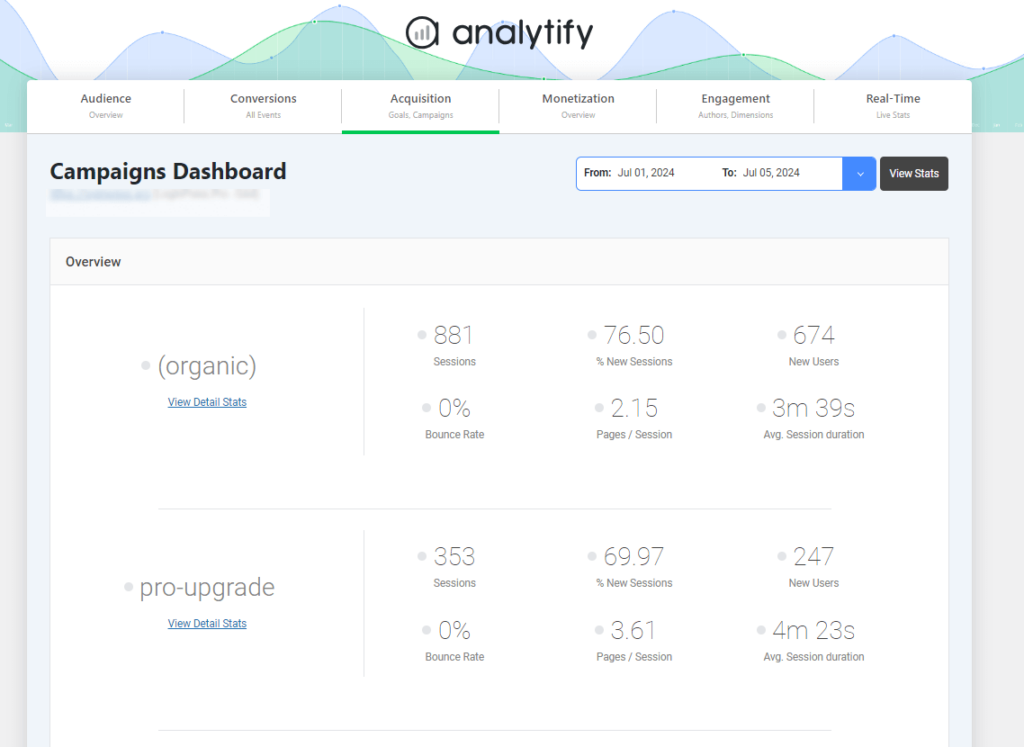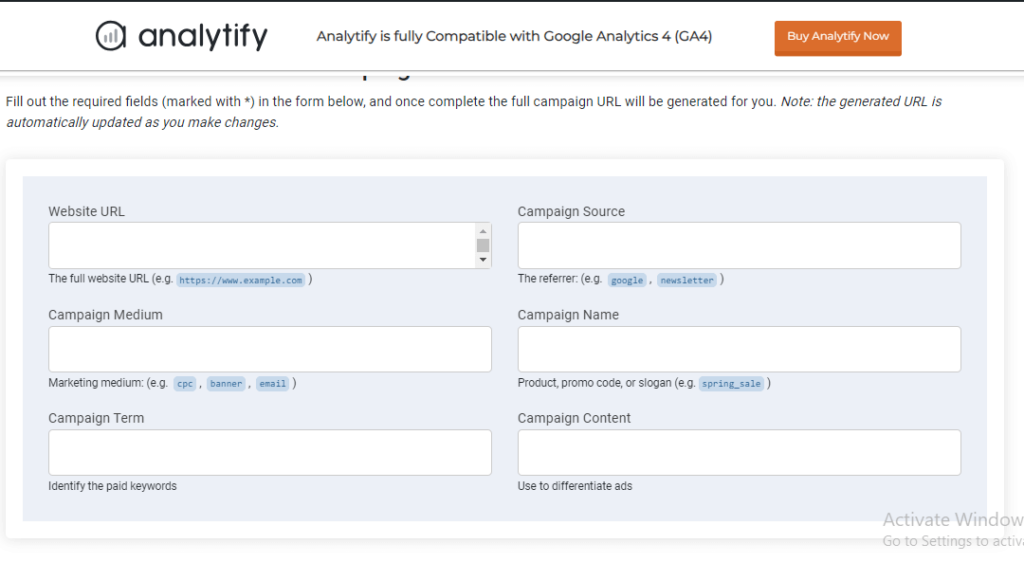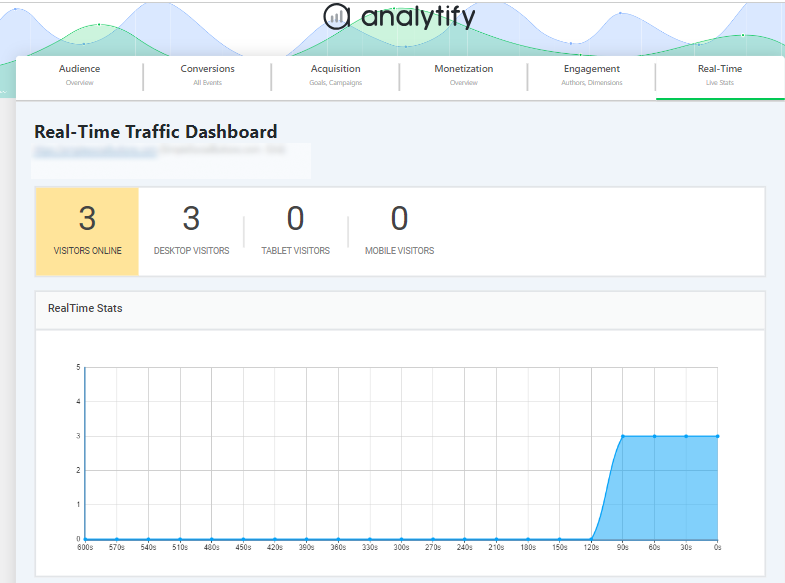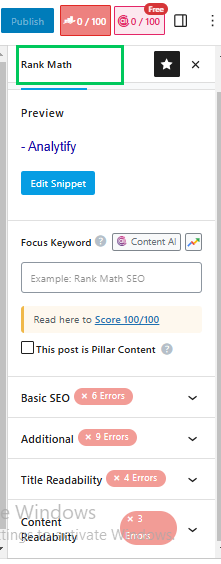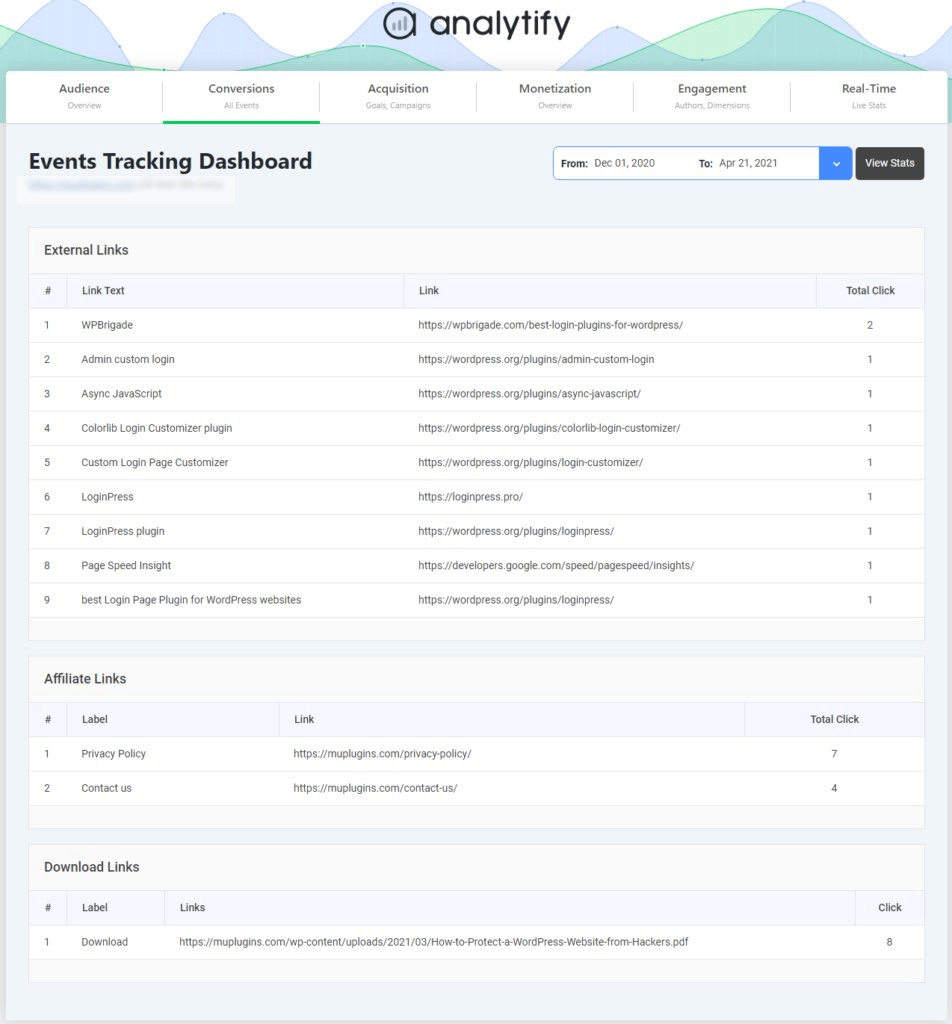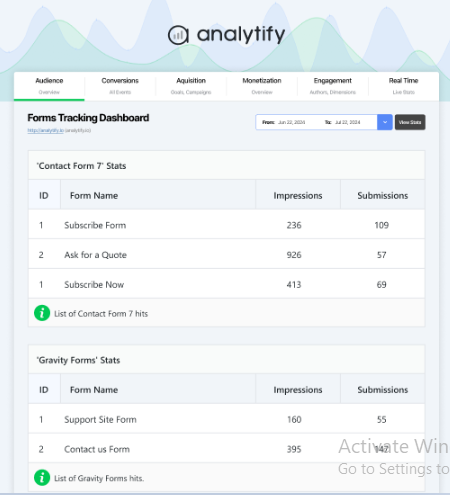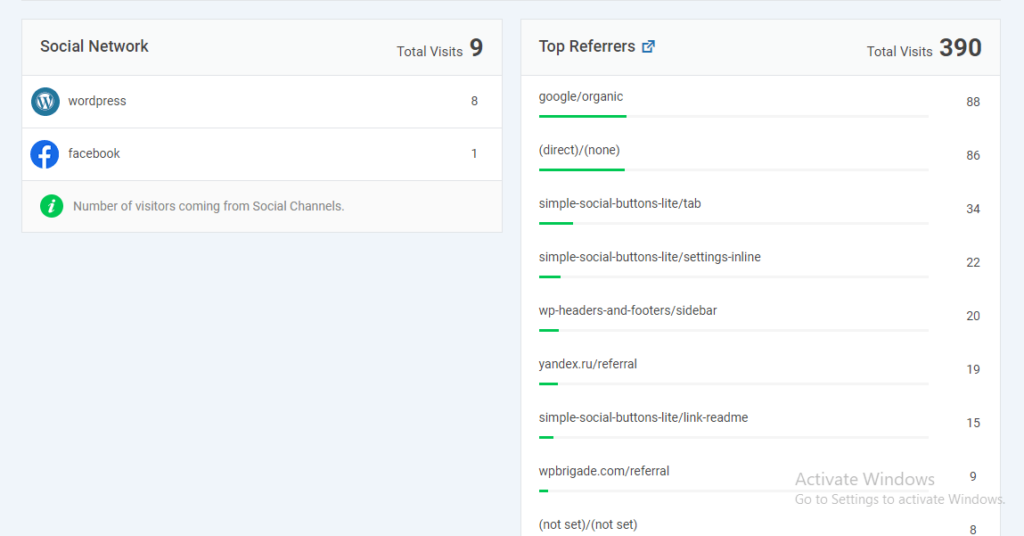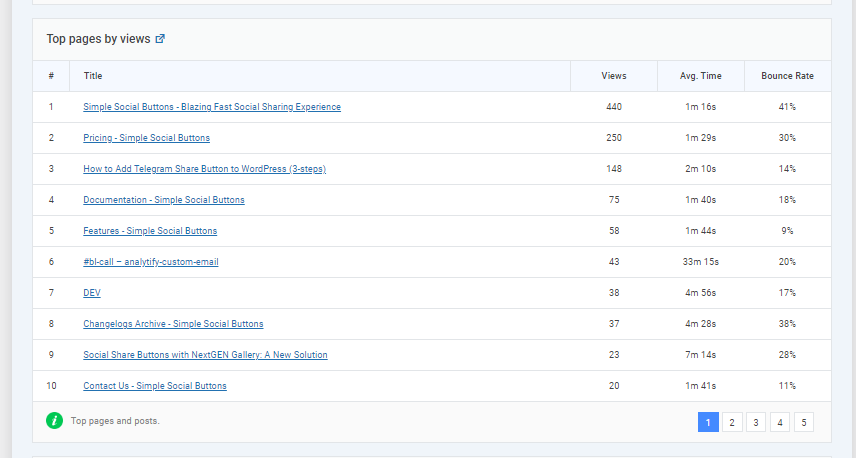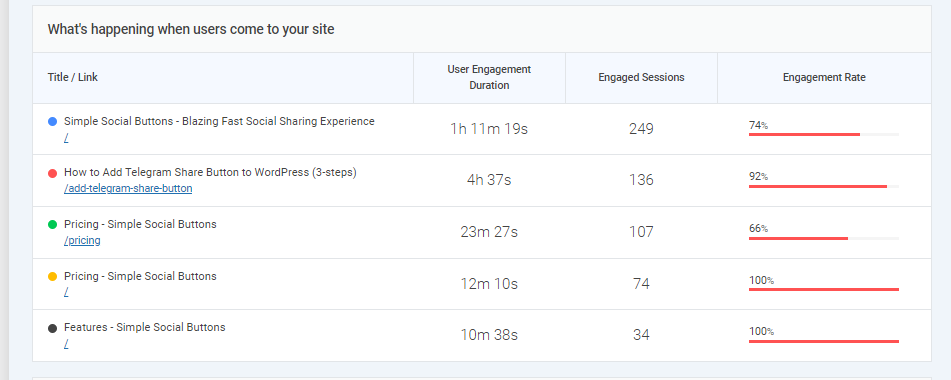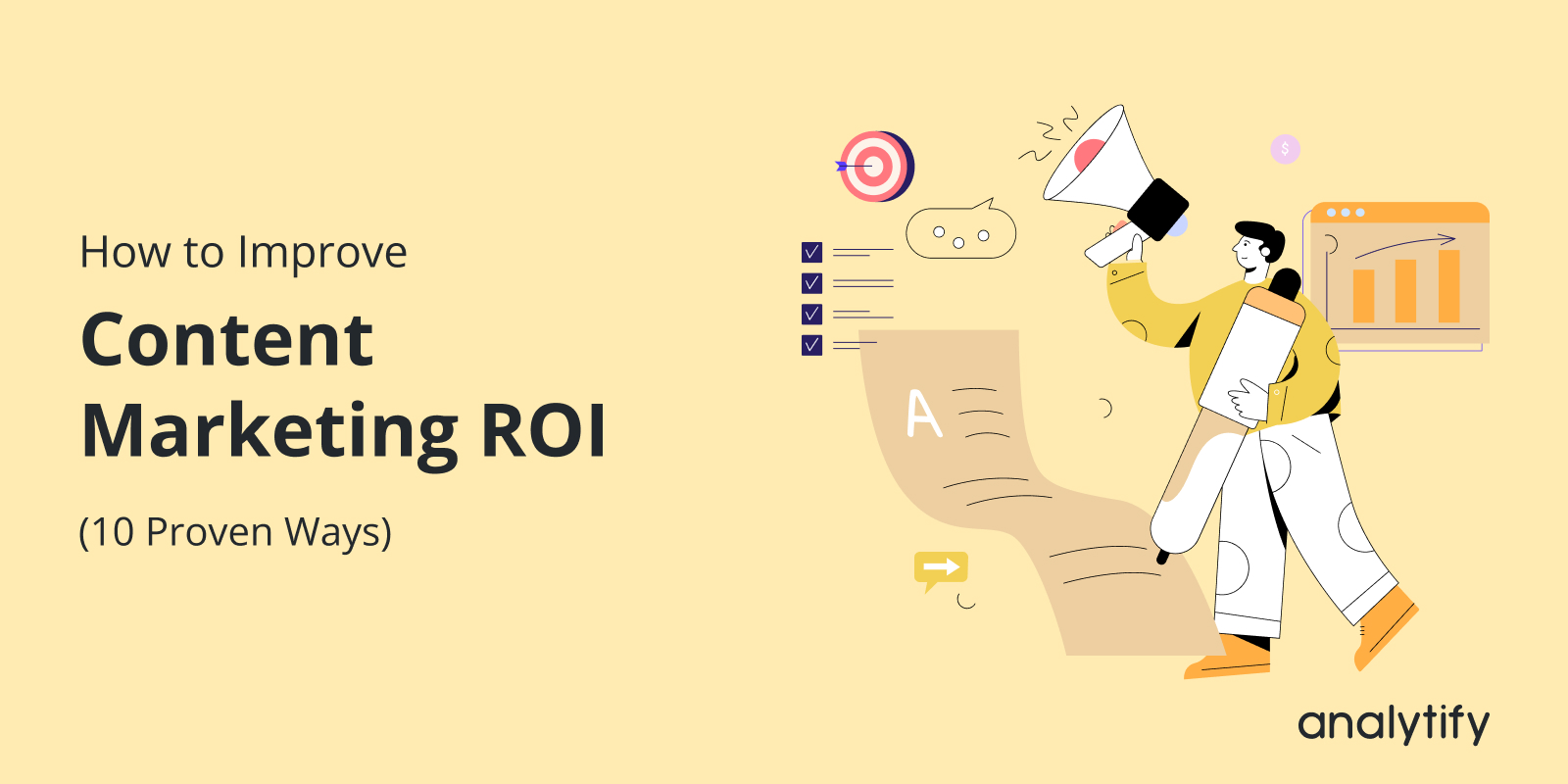
How to Improve Content Marketing ROI (10 Proven Ways)
Want to see how well your content is performing? Start by measuring your ROI.
Content Marketing ROI is the key metric that helps you evaluate the effectiveness of your content strategy, allowing you to see if your content is driving meaningful results like traffic, leads, and conversions.
In this guide, we’ll explore Content Marketing ROI, why it’s essential, how to measure it, and 10 proven ways to boost your content ROI while helping you improve your marketing outcomes.
Let’s get started!
Content Marketing ROI (TOC):
What is Content Marketing ROI?
Content Marketing ROI (Return on Investment) is a metric used to evaluate the effectiveness and profitability of content marketing efforts. It measures the financial return generated from the resources invested in creating, distributing, and promoting content.
Understanding Content Marketing ROI helps businesses assess whether their content strategies deliver value and achieve desired objectives, such as increased brand awareness, lead generation, or sales.
For example, if a company invests $10,000 in a content marketing campaign, it might assess ROI by examining the total revenue generated from new leads or conversions directly linked to that content. If that content brings in $50,000 in revenue, it means the business has earned significantly more than it spent. This difference shows that the content strategy is profitable and worth continuing, as it’s generating more money than was invested.
How to Measure Content Marketing ROI?
Measuring Content Marketing ROI involves assessing the effectiveness of your content strategies by tracking goals, assigning monetary value to outcomes, and calculating returns.
Steps to Measure Content Marketing ROI:
- Define Clear Goals: Set objectives such as brand awareness, lead generation, customer engagement, sales, and retention.
- Assign Monetary Value: Quantify each goal. For example, if a lead is worth $1,000 and you generate 100 leads, the value is $100,000. Sales, customer lifetime value (CLV), and brand awareness can also be monetized.
- Track Metrics: Monitor performance using KPIs such as website traffic, engagement (time on page, bounce rate), conversion rates, SEO metrics (organic traffic, keyword rankings), and customer retention.
- Calculate Costs: Include content creation, distribution, software tools, and personnel costs. For example, if content creation costs $10,000, distribution $5,000, and tools $5,000, the total costs are $20,000.
- Apply the ROI Formula: The basic formula for calculating ROI is:
For Content Marketing, ROI can be tailored as follows:
Example:
- Revenue from Content Marketing: $50,000
- Content Marketing Costs: $20,000
ROI= (50,000−20,000 / 20,000) ×100=150%
This indicates a 150% return on your content marketing investment.
Why should you focus on Content Marketing ROI?
Focusing on Content Marketing ROI is essential for several reasons:
- Maximize your budget: By tracking Content Marketing ROI, you can invest in strategies that yield the best returns, ensuring you spend efficiently.
- Improve content performance: Analyzing content ROI helps you identify what works best, allowing you to refine your approach and create content that drives engagement and conversions.
- Boost revenue: Optimizing for content ROI leads to higher conversions, directly impacting sales and overall growth.
- Optimize time and resources: Focusing on ROI ensures you prioritize strategies that deliver results, saving time and reducing effort on low-impact activities.
- Boost long-term returns: Consistently improve your strategy to generate more leads, sales, and brand loyalty.
- Build trust: Proving the effectiveness of your content strategy by showing positive ROI results builds trust with management, clients, and other stakeholders.
Focusing on these aspects ensures your content marketing efforts are strategic, efficient, and aligned with your business goals.
10 Proven Ways To Improve Content Marketing ROI
Here are ten proven ways to increase Content Marketing ROI while utilizing Analytify to track and optimize your efforts:
1. Track Key Metrics That Matter
Tracking essential metrics like traffic, bounce rate, and conversions is crucial for assessing the performance of your content and identifying areas for improvement. By monitoring these key performance indicators (KPIs), you can understand how your content engages users, leads to conversions, and ultimately impacts your return on investment (ROI). The data you gather allows you to optimize your strategies and focus on creating content that delivers the highest value.
Join 50,000+ beginners & professionals who use Analytify to simplify their Google Analytics!
With Analytify, you can easily monitor these key performance indicators (KPIs) through intuitive reports. Analytify’s dashboard provides a clear overview of important metrics like page views, bounce rate, session duration, and conversions, allowing you to assess content performance quickly. The real-time dashboard helps you make immediate adjustments based on how visitors interact with your content.
2. Analyze Top Referrers to Understand Traffic Sources
Analyzing top referrers is critical to understanding where your most valuable traffic is coming from. Identifying which external sources—such as backlinks, social media, or partner websites—drive the most engaged visitors allows you to allocate resources more efficiently.
By focusing on the referrers that bring in high-quality traffic, you can boost your content marketing efforts and improve ROI. Additionally, tracking top referrers helps you build stronger partnerships and optimize your content distribution across platforms that matter most to your audience.
Analytify’s Top Referrers Report breaks down all the sites sending traffic to your website. This helps you quickly identify which external sources are most effective in driving users to your content.
By understanding and optimizing traffic sources, you can refine your content distribution strategy, improve visitor engagement, and drive higher conversions, leading to Content marketing success.
3. Use Campaign Tracking to Optimize Your Marketing Channels
Campaign tracking allows you to measure the effectiveness of your content across multiple channels, such as email, social media, and paid ads. By setting up UTM parameters, you can track the specific performance of each campaign and understand which channels are delivering the best results.
This enables you to allocate your budget and efforts more efficiently, focusing on channels that drive higher engagement and conversions. Optimizing your marketing channels based on precise data ensures you get the most out of your content marketing investments, ultimately improving your ROI.
With Analytify’s Campaign Tracking Addon, you can easily track the performance of your marketing campaigns by adding UTM parameters to your URLs. This helps you see how each marketing channel contributes to traffic and conversions.
Use the Analytify UTM Campaigns URL builder to generate unique tracking URLs for all campaigns, making reporting seamless.
4. Set clear goals and Custom Alerts for Performance Changes
Establishing clear goals and Setting custom alerts for performance changes are vital for improving content marketing ROI. These strategies help you monitor key metrics in real time, allowing quick responses to opportunities or issues.
You can optimize resource allocation and proactively adjust your content strategy by tracking progress toward clear objectives. Together, these practices ensure continual improvement, enabling your content to drive consistent growth and deliver a strong return on investment.
The Goal Tracking Add-on and Email Notification Add-on in Analytify play vital roles in content marketing success by enabling precise goal-setting and real-time performance monitoring. The Goal Tracking Add-on helps measure conversions and optimize your content strategy.
The Email Notification Addon provides timely alerts to help you respond quickly to performance changes. Analytify’s Real-Time Traffic Dashboard and alert features enable you to track key metrics as they happen, providing instant notifications when performance metrics fall outside your set range. This helps you respond immediately. It streamlines your efforts, allowing you to focus on content that drives the highest ROI.
5. Optimize Content for SEO
Optimizing your content for SEO is crucial to ensuring it ranks well in search engines and reaches a broader audience. Focus on two key components: on-page SEO and technical SEO. Both play vital roles in improving visibility and driving traffic to your content.
On-page SEO involves optimizing the content itself to make it more search-engine friendly. This includes:
- Keyword Optimization: Using relevant and high-traffic keywords that match what your audience is searching for.
- Meta Descriptions: Crafting compelling meta descriptions to improve click-through rates from search engine results.
- Internal Linking: Adding internal links keeps users on your site longer and improves site navigation.
To streamline your on-page SEO efforts, a tool like RankMath can simplify optimization tasks and ensure you cover essential SEO elements. RankMath offers a comprehensive checklist that guides you through optimizing each piece of content, from keyword placement to meta descriptions and internal linking. Other on-page SEO tools include Yoast SEO, Ahrefs, SEMrush, etc.
Technical SEO ensures your website functions smoothly, which is vital for user experience and search engine rankings. Key areas include:
- High loading speed: Ensuring your website pages load quickly to reduce bounce rates and keep users engaged.
- Mobile Optimization: Make sure your site is mobile-friendly, as more users browse on smartphones.
- Fixing Broken Links: Regularly checking and fixing broken links to keep your website healthy.
Analytify’s 404 Page Error Report helps you easily track and identify broken links. It shows where users encounter 404 errors. After reviewing this report, you can quickly fix or redirect broken links to improve user navigation.
You can boost your content’s visibility and overall performance in search engine results, ultimately enhancing your content marketing ROI.
Check out our comprehensive guide on 24+ SEO statistics you need to know to boost your ranking and further enhance your SEO strategy.
6. Conduct Comprehensive Keyword Research
Comprehensive keyword research is essential for creating content that aligns with what your audience is actively searching for. By identifying relevant, high-traffic organic keywords, you can ensure your content is optimized for search engines, increasing visibility and attracting more organic traffic.
Targeting the right keywords also helps you create content that resonates with your audience’s needs, improving engagement and driving higher conversions, which leads to a better Content Marketing ROI.
Analytify integrates with Google Analytics to help you understand how your content performs for specific keywords, tracking which terms drive the most traffic and engagement. Use Analytify’s Search Term Reports to analyze which keywords bring users to your site. This will allow you to refine your keyword strategy based on search data.
By conducting comprehensive keyword research, optimizing your content accordingly, and analyzing keyword reports, you can attract more qualified traffic, increase engagement, and drive conversions, leading to improved Content Marketing ROI.
7. Utilize Strategic Distribution Channels
Sometimes, improving your content marketing ROI is less about content quality and more about expanding its reach. Here’s how you can maximize your content’s exposure using different distribution channels:
- Owned Media: Promote your content to your existing audience, including website visitors, social media followers, and email subscribers. You control creation and distribution, but reach is limited to your current audience base, which may hinder scalability.
- Earned Media: Expand your content’s reach through organic mentions, shares, or promotions by others. Examples include influencer shoutouts, mentions in reputable magazines, or viral social media shares. This media type allows your content to reach new audiences without direct cost.
- Paid Media: Invest in PPC advertising, paid social media campaigns, or native advertising platforms to push your content to wider audiences. Paid media helps place your content on high-traffic sites, driving more exposure. While it requires a financial budget, targeting the right audiences can generate high-quality leads and improve your content marketing ROI.
Combining owned, earned, and paid media ensures your content reaches a larger and more diverse audience, ultimately improving engagement and your content marketing ROI.
Utilizing Analytify’s Event Tracking and Form Tracking Addons helps improve content marketing ROI by monitoring user interactions across distribution channels.
Event Tracking Addon allows you to monitor user interactions, such as clicks on social media sharing buttons, email sign-ups, or video plays. By tracking these events, you can gauge which distribution channels (social media, email, paid ads) drive the most engagement, helping you focus on the most effective ones.
The Form Tracking Addon lets you track subscribers, impressions, and submissions from forms embedded on landing pages or blog posts. This helps you evaluate how well different distribution channels drive lead generation and conversions, ensuring you allocate resources to the best-performing platforms for maximum ROI.
8. Focus on Top Traffic Sources
Focusing on traffic sources and consistently delivering the highest-quality visitors is a powerful way to dramatically boost your content marketing ROI. Rather than attempting to capture traffic from every possible channel, zeroing in on the sources that yield the most engaged audience allows you to optimize your efforts and resources, leading to more conversions and better results.
Concentrating on the best-performing channels attracts more relevant visitors and improves the overall effectiveness of your content marketing success. Focusing on sources that drive more qualified leads increases the likelihood of conversions.
Directing your marketing budget and time toward the channels that consistently perform well allows you to achieve better results without increasing your expenditure. Regularly analyzing and adjusting your focus based on top-performing traffic sources can ensure sustainable growth and improve your content marketing ROI over time.
Analytify’s Traffic Reports allow you to see which sources bring the most valuable visitors. You can segment data by organic search, direct traffic, social media, and more, helping you focus your efforts on the best-performing channels.
9. Repurpose Successful Content for Greater Impact
Repurposing high-performing content allows you to maximize the value of content that already delivers results. Instead of creating new content, you can adapt successful blog posts, videos, or infographics into other formats, reaching new audiences and extending the content’s lifespan.
This approach saves time and resources while increasing engagement across multiple platforms, ultimately improving your Content Marketing ROI. Repurposing content also enhances your ability to dominate various content distribution channels without additional heavy investment.
With Analytify, you can easily identify top-performing content through detailed reports. It allows you to focus on repurposing content that engages your audience and drives traffic. Once content is repurposed, Analytify helps you track its performance across different platforms, ensuring that your efforts continue to drive strong engagement and conversions.
By repurposing high-performing content, you reduce the need for constant content creation, maximize your existing efforts, and improve content marketing ROI through better efficiency and extended reach.
10. Measure Engagement
Measuring engagement provides details about how your audience interacts with your content. Engagement metrics such as time spent on a page, scroll depth, click-through rates, session duration, engaged sessions, and social shares indicate how effective your content is at capturing attention and keeping users engaged.
High engagement is often a strong predictor of conversions, making it a key metric for increasing Content Marketing ROI. By analyzing these metrics, you can identify which content resonates with your audience and optimize the rest to increase user interaction, leading to higher conversion rates and a better return on investment.
Analytify tracks vital engagement metrics, such as session duration, page views, and scroll depth, clearly understanding how users interact with your content.
With Analytify’s analytics, you can instantly track engagement as users navigate your content, identifying which pieces keep users engaged the longest.
Measuring and optimizing engagement ensures your content attracts and keeps visitors engaged. This is essential for converting users and driving higher content marketing ROI.
Content Marketing ROI FAQs
1. What is content marketing ROI?
Content marketing ROI measures the revenue generated from content marketing efforts compared to the costs involved. It helps determine the profitability of content strategies.
2. Why is it difficult to measure marketing ROI?
Measuring marketing ROI is challenging due to three main reasons:
Some marketing campaigns don’t directly link to immediate revenue, making it hard to attribute income accurately.
There is no universal method for determining what constitutes marketing costs, leading to inconsistencies in calculations.
Specific campaigns may have extended payback periods, complicating the evaluation of their impact within a specific timeframe.
3. What marketing has the highest ROI?
Email marketing consistently offers the highest return on investment (ROI) among marketing strategies. It allows businesses to reach their audience directly, nurture relationships, and drive conversions at a low cost compared to other channels.
4. Does paid promotion improve content marketing ROI?
Paid promotion can expand your reach and attract a larger, more targeted audience, accelerating traffic and conversions. When done effectively, paid promotion can boost ROI.
5. How do content distribution channels affect ROI?
Choosing the right distribution channels—whether organic, paid, or earned—ensures that your content reaches the intended audience, maximizing engagement and improving ROI.
6. Which social media platform has the best ROI?
Instagram, Facebook, and YouTube currently offer the highest return on investment (ROI) among social media platforms. However, the best platform for your business will depend on your specific goals, target audience, and content strategy.
Wrapping up!
Improving your Content Marketing ROI is a strategic process that requires consistent tracking, optimization, and resource allocation. By focusing on key areas such as tracking essential metrics, analyzing top traffic sources, utilizing effective distribution channels, and optimizing content for SEO, you can maximize your content’s performance and increase profitability.
Utilizing tools like Analytify enables you to monitor campaign effectiveness and identify opportunities for improvement, all of which contribute to better ROI.
Repurposing successful content, optimizing engagement, and using campaign tracking and alerts help refine your content strategy and ensure it aligns with your goals. By adopting these methods, whether through organic efforts or paid promotion, you can achieve sustainable growth, more leads, and higher conversions in your content marketing.
For more tips on enhancing your email marketing strategies, read this guide on Email Marketing Best Practices.
Have you implemented any of these strategies to improve your Content Marketing ROI? Let us know your thoughts and experiences in the comments below!

